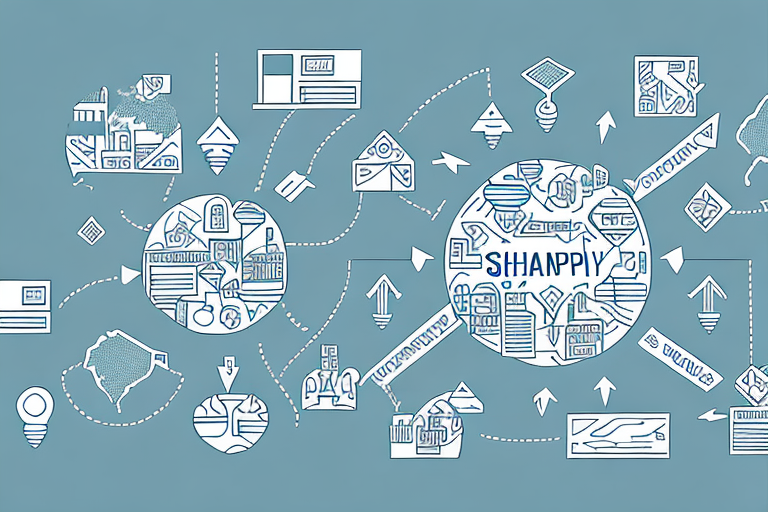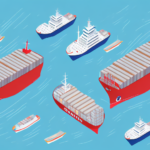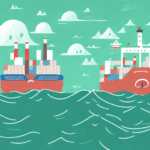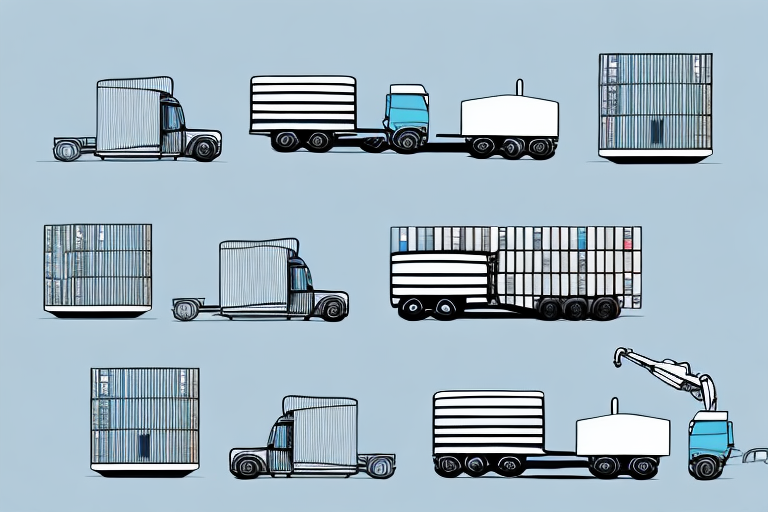Understanding Particular Average in Supply Chain Management
In supply chain management, numerous risks can disrupt the seamless movement of goods from their origin to their final destination. One such significant risk is particular average. Commonly used in marine transportation and cargo insurance, particular average refers to the partial loss or damage of goods that are insurable under an insurance policy.
The Basics of Particular Average in Supply Chain Management
Particular average, often referred to as 'partial loss,' is a type of marine cargo insurance claim related to the loss or damage of specific goods in transit. When a partial loss occurs, the insurance company compensates the insured based on the value of the lost or damaged goods. However, coverage is subject to the terms and conditions outlined in the policy.
For supply chain managers, understanding particular average is crucial. Ensuring that cargo is adequately insured and that the policy includes coverage for particular average can mitigate financial risks. Additionally, implementing measures such as secure packaging and selecting reliable carriers can minimize the likelihood of partial losses, thereby maintaining the integrity and efficiency of the supply chain.
The Role of Particular Average in Marine Cargo Insurance
Marine cargo insurance is vital for businesses involved in sea transportation of goods. It addresses various risks associated with cargo transit, including particular average. Under this coverage, the insurer compensates the insured for the actual loss or damage to goods, provided such losses are not excluded in the policy.
Particular average can result from factors like rough weather, accidents, or theft. Insurance companies typically compensate only for the direct loss or damage sustained, excluding ancillary transportation costs. Businesses should thoroughly review their marine cargo insurance policies to confirm that particular average is covered, ensuring comprehensive protection against potential losses.
The Calculation Process for Particular Average Claims
Calculating particular average claims involves assessing the net value of the damaged or lost goods relative to the total value of the shipment. Only goods insured under the policy and impacted by the loss or damage are considered in this calculation. The payout is determined by applying the percentage of loss to the insured value of the affected goods.
The calculation can be intricate, factoring in the type of goods, transportation mode, and specific policy terms. In certain cases, the salvage value of damaged goods may also influence the final settlement. Engaging a qualified insurance professional or adjuster is recommended to ensure accurate and fair claim assessments.
Common Causes of Particular Average in the Supply Chain
- Rough Handling: Poor handling practices at ports or terminals can lead to cargo damage.
- Accidents: Collisions or ship accidents can result in partial loss of goods.
- Theft: Unauthorized access or theft during transit can cause significant losses.
- Natural Disasters: Adverse weather conditions like storms or hurricanes may damage cargo.
- Improper Packaging: Inadequate packaging can make goods susceptible to damage during transportation.
- Transportation Delays: Extended transit times can expose cargo to unfavorable conditions, such as extreme temperatures or humidity.
Addressing these factors through improved handling practices, secure packaging, and reliable transportation partners can significantly reduce the risk of particular average.
How to Mitigate the Risk of Particular Average in Your Supply Chain
Businesses can adopt several best practices to mitigate the risk of particular average:
- Select Reliable Partners: Choose trustworthy suppliers, carriers, and freight forwarders to ensure proper handling and transportation of goods.
- Use High-Quality Packaging: Invest in robust packaging materials to protect goods from damage during transit.
- Secure Cargo Properly: Ensure that all cargo is adequately secured to prevent movement and potential damage.
- Invest in Comprehensive Insurance: Obtain insurance coverage that specifically includes particular average to safeguard against partial losses.
- Stay Informed on Regulations: Keep abreast of industry regulations and compliance requirements to implement necessary precautions.
Implementing these strategies not only reduces the likelihood of partial losses but also enhances overall supply chain resilience.
Examples of Particular Average Claims and Their Impact on Businesses
Particular average claims can have far-reaching effects on businesses:
- Financial Loss: Loss or damage to goods leads to direct financial losses, impacting profitability.
- Increased Insurance Premiums: Frequent claims may classify a business as high-risk, resulting in higher insurance costs.
- Operational Disruptions: Loss of inventory can cause shortages, delaying order fulfillment and affecting customer satisfaction.
- Legal Disputes: Disagreements over responsibility for losses can lead to costly legal battles.
- Reputation Damage: Consistent losses may tarnish a business’s reputation, making it difficult to retain clients and partners.
For instance, a business experiencing theft-related particular average claims may face inventory shortages, leading to delayed shipments and dissatisfied customers. Moreover, the subsequent increase in insurance premiums can strain the company’s financial resources, affecting overall sustainability.
The Legal Implications of Particular Average in Supply Chain Management
Particular average carries several legal implications for businesses within the supply chain:
- Contractual Terms: Losses from particular average can influence contract negotiations, potentially leading to higher prices or revised terms to cover additional risks.
- Jurisdictional Challenges: International supply chains may face varying laws and regulations regarding particular average, complicating legal resolutions.
- Dispute Resolution: Determining liability and compensation for partial losses can result in legal disputes between businesses, insurers, and other stakeholders.
Understanding these legal aspects is essential for businesses to navigate potential conflicts and ensure compliance with relevant laws. Seeking legal counsel can help businesses clarify their rights and obligations, minimizing the risk of protracted legal issues.
Comparing Particular Average to General Average and Free on Board (FOB)
It's important to differentiate particular average from related maritime insurance terms:
- General Average: Involves the intentional sacrifice of part of the cargo to save the entire voyage, with all parties sharing the resultant losses.
- Free on Board (FOB): Indicates the transfer of ownership and risk from the seller to the buyer once the goods are loaded onto the shipping vessel.
Particular average specifically covers damage or loss to individual shipments, whereas general average pertains to shared sacrifices for the greater good of the voyage. Understanding these distinctions aids businesses in selecting appropriate insurance coverage and managing risks effectively.
Key Considerations for Procuring Insurance Coverage for Particular Average
When securing insurance coverage for particular average, businesses should consider the following:
- Policy Terms and Conditions: Examine the extent of coverage, including any excesses or exclusions, to ensure comprehensive protection.
- Type of Goods: High-value or hazardous materials may require specialized coverage or higher liability limits.
- Geographic Scope: Ensure that the policy covers all relevant routes, destinations, and transshipment points involved in the supply chain.
- Insurance Broker Expertise: Collaborate with knowledgeable brokers and underwriters who can navigate the complexities of insurance policies and tailor coverage to specific business needs.
For example, transporting electronics may necessitate higher coverage limits due to their high value, while shipping perishable goods might require policies that address specific risks related to temperature and handling.
Additionally, businesses should regularly review and update their insurance policies to align with evolving supply chain dynamics and emerging risks. Partnering with reputable insurance providers and seeking expert advice can ensure that businesses remain adequately protected against particular average and other potential threats.
For more information on optimizing your supply chain insurance, visit ShipScience.






















